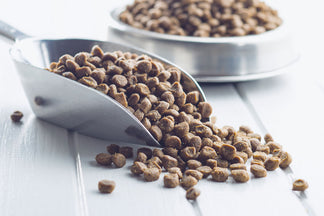Like humans, as dogs age and enter their senior years, they will generally lose athleticism and muscle tone and their bodies will take longer to recover from vigorous exercise. However, aging is really no excuse for becoming a couch potato, whether it is you or your dog. Unfortunately, far too many pet owners use old age as a primary excuse to cut back on their dog’s exercise often to the detriment of the dog’s wellbeing.
Exercise and your Senior Dog
As a dog ages and enters their senior years, their body will lose muscle mass and flexibility. A classic case of “use it or lose it”. Furthermore, inflammatory diseases like osteoarthritis can manifest and cause pain, which can further limit mobility and their willingness to get up and moving. It can become a vicious cycle, leading to inactivity. This is the same, unfortunately, for us humans.
The Importance of Exercise for Seniors
I would argue that older dogs need exercise as much, if not more than younger dogs. As a dog ages, they will naturally become less active and are at greater risk of muscle atrophy and osteoarthritis. These are the exact things that regular exercise can forestall. Furthermore, as a dog ages, their skeletal system is less capable of handling the stresses of everyday life. Regular exercise (and proper feedings) can ensure that the pet is at a healthy weight and thus, minimize the load on the senior dog’s bones and joints. The Mayo Clinic reports that exercise is crucial for people with arthritis because it increases strength and flexibility, reduces joint pain, and helps combat fatigue. The same is likely true for our pets.
4 Tips for Exercising a Senior Dog
Old age is not a valid reason to stop exercising your pet. Sure, an older dog might not be able to do the same things that they could when they were younger, but there are many ways to ensure that your dog remains active and healthy throughout their senior years. Here are 4 tips to keep your older dog in shape.
- Cross train. Providing your pet with a variety of exercises is a smart way to keep their bodies strong, mobile, and healthy. Mix in core work, strength, and balance training, which are low impact.
- When possible, cut back but don’t cut. Maybe your dog can no longer run the 5 miles with you that they used to. This does not necessarily mean they shouldn’t run! Before stopping an activity all together, try cutting back. Reduce the intensity level (e.g., the distance or speed, or both of your run). Your dog will still enjoy the benefits of the activity without it causing them discomfort or overuse.
- Focus on weak points. In older dogs, the hind legs tend to lose strength before the front legs do. Incorporating specific exercises that target the hind legs, like hill work and squats, can mitigate this issue and keep your pet active longer.
- Feed your pet well. By well I mean appropriate portions of appropriate food. Overfeeding can put undue stress on and older pet’s body. The last thing they need is to be carrying around excess fat. Furthermore, choose high quality dog foods that are full of healthy, natural ingredients that can help your older dog’s body regenerate and resist the aging process. And watch out for the so called “senior” foods, which tend to be much higher in carbohydrates and lower calorie fillers, when in fact, your older dog needs more protein and fat to help their bodies function at their best.
Of course, always check with your veterinarian when contemplating changes in your dog’s exercise routines. Assuming that your dog is generally healthy, there is really no reason that they can exercise for their entire life.

 Food
Food
 Food
Food
 Food
Food
